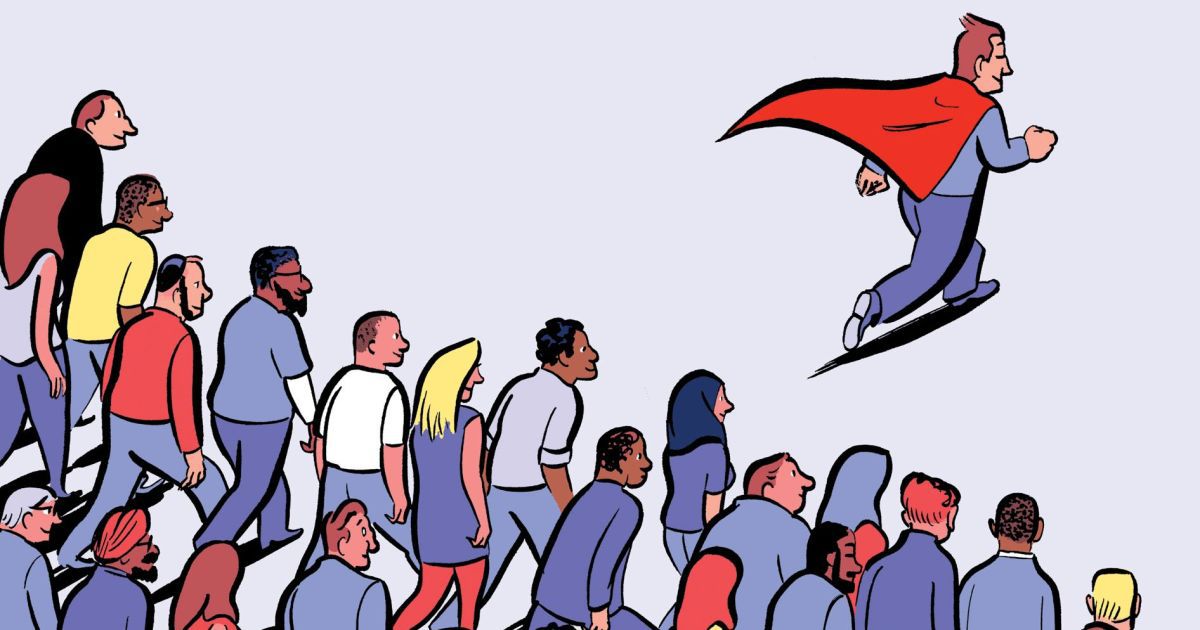The mystery of leadership - Part Three

I am usually cautious about the different models and theories management science applies, because in my opinion most of them greatly oversimplify reality by grabbing only a few aspects of it. Many years ago however I learned about a brilliant leadership model called Situational Leadership and despite its simplicity, I believe that it can be applied very well in everyday leadership practice. In the upcoming parts of my series I will summarize this model for you. I try to do it in a practical way that shows my everyday experiences about it.
The authors are Paul Hersey and Ken Blanchard who suggest that there is no single appropriate leadership style, instead successful leaders have to adjust their styles to "follower maturity", i.e the overall working attitude and competence level of their subordinates.

You have all sorts of people at your workplace. Just to give you an idea, let's imagine a typical team having five different characters. Let me introduce my team to you.
First of all, here is Mike. He is a very good worker, a strong performer. He is a typical "right-hand of the boss" person. We are very aligned in our thinking. Any time I have a problem and start telling him, he says “we have already solved it. Don’t worry.” I would call him a Hero.
The second person from my team is Peter. He is new to my team, he has been with us for three months only, though he works for the company for four years. He is a good worker, but still nervous about his performance. His previous boss described him as his Hero, though the way they speak about each other gave me the impression that Peter depended much on his previous boss. He is the type of person who’ll not take any action independently. I become quite frustrated when I see him coming to my room with his clipboard in his hand and asking “Can I have a few questions?” His questions are valid, but he already has the answers within him. He is just always nervous that he makes a mistake. He is almost a Hero, but not quite there. He takes a lot of energy from me. I would call him Mr. Uncertain.
The third person is Greg. He is brand new, a Newbie. It’s his first week on the job and he is also brand new to the company. I hired him because of his energy and also because he showed a lot of loyalty towards the company. He has so much energy that he would like to solve all the problems of the world. I have to educate him on the company, on the processes, on the job he has to carry, but the energy and motivation he already has. He needs to channel his energies. Therefore everyday I spend a minimum of 30 minutes with Greg to go over things step-by-step. If I do not have time to do that (e.g. because of Peter), I know I am going to loose him. There seems to be an easy solution: “please my Hero, train him. Just let him shadow you around.” BUT: is it his responsibility? He might loose his enthusiasm for doing my job.
“Ignorance on fire”: my Newbie is ignorant, because he doesn’t know company specifics, but he is not ignorant at all as a person.
Let’s get to know my fourth team member. Steve is my Survivor. He has been a long time at the company and there is a healthy relationship between him and I. In our last performance review meeting he has been open to me and asked “What is my next position, what do I aspire for at this company?” He is a great worker, so I promised him a higher position.
However due to reorganization/downsizing or such, everything he was aspiring for has gone. Now, he feels personally sabotaged by me, as if I’ve personally taken the knife and stabbed him in the back. Now I see him arriving at the company every day and questioning “why?” He did survive the storm of the cutbacks, but you know after someone faces a crisis, his glazed look is over. He is absent looking in his eyes. He physically shows up to work, but mentally he is not there. No one is inside. I need to call him in and we need to have a heart-to-heart talk. “See, what happened I feel sorry for, but I cannot change that. If you want to leave, I understand, but I need to get the job done. I need your professionalism in my team.”
And finally we have Niels, my fifth team mate. And he is a pain for me. I would call him a Party Killer. He is a challenge for me. He has been with me for almost three years. I know, he knows it, he has the experience. Therefore when he gives me the work that is not acceptable, I am frustrated, because I know, it’s there. Whereas Peter doesn’t know, he knows, he knows it quite well. Sometimes I would like to shake him! He has the knowledge, and many times he can give me good ideas, but with tons of extra garbage (complaints, excuses, anger, frustration etc...)

Well, this is my team. Would you like to have my job? I have to manage the situation. Their behavior must drive my actions. This is what Situational Leadership is all about. You have different people, different mentalities, and you have to adjust your style accordingly.
And now we return to consistency and flexibility or fairness I discussed in my prevous post.
• What is the appropriate leadership behavior in your opinion with my Hero? Give him freedom and autonomy.
• What do I need to do with Mr. Uncertain? Encourage him.
• Newbie? He is dying for attention. I need to get him started. Eg. go up to him and say “please get these five things done until I come back.”
• Survivor? We have a lunch together and talk it over.
• Party Killer? I need to give him clear instructions and see if he follows them.
Consistency and flexibility comes in when they change.
• What if Hero has questions? Do I ignore him and say “hey, you know, how to do it, please solve it alone”.
• What if Party Killer shows up shining like a Hero? etc.
I have to be consistent, therefore I have to adjust. Please note that I am not adjusting to personalities, but performance.
All of us are a mix of these characters, even though I described them as distinct personalities. And this is situational, it might change from task to task. Hopefully there is always some aspect of your job, that is new to you, something that you want to learn. Then probably you have something that is frustrating, e.g. we keep questioning the policy at times. Then if you look at your to-do list, there is always something that never gets done. This is where we are Party Killers. We always have tasks that stink, that are awful.
Step 1 in this model is Identifying the task level. What does it mean?
These are your responsibilities at the workplace.
• main job, role, functions: overall level. This is your main responsibility within your job.
• Major tasks, goals, objectives: we break the main responsibility down to these
• Detailed activities: we break the responsibilities even further down.
When you do Step 1 of the Situational Leadership model: we need to know what type of communication we are having, what detailed should this be.
E.g. I talk with my Hero on an overall level and with my Newbie on a Detailed level. If I would go to an overall level with Newbie… e.g. I would say something like “Let’s market these!”, is he going to come up with solutions?
Yes, of course. But as he doesn’t know much about how we usually do things and what is expected from him, I set him up for failure. If you do not clarify what the task is upfront, there is a huge room for errors. It can be a big chain of events if you don’t specify your expectations.
In the next post, we will continue our journey into the world of Situational Leadership with step 2 of the model.
If you are interested in the previous parts of this series, you can find them here:
https://steemit.com/leadership/@ksolymosi/the-mystery-of-leadership-part-one
https://steemit.com/leadership/@ksolymosi/the-mystery-of-leadership-part-two
Sources of pictures:
This post has received a 0.22 % upvote from @drotto thanks to: @banjo.